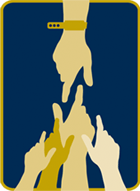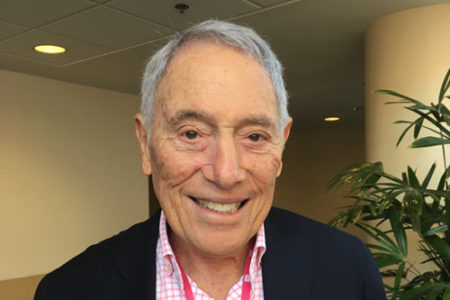Jerry Sachs is a man with a mission. As a patient at the National Institutes of Health Clinical Center for 40+ years, Jerry is passionate about giving back to the NIH.
“There isn’t enough I can do to show my appreciation for this treatment they have given me,” Jerry says.
Jerry first received treatment for melanoma at the NIH in 1978, undergoing surgery for melanoma and then subsequent monitoring for several years. It was during this observation period that NIH doctors discovered Jerry’s thyroid cancer. What followed was a new series of surgeries, as well as two cycles of radioactive iodine.
The thyroid cancer treatments, in turn, unveiled possible signs of prostate cancer, 21 biopsies. Fortunately, no cancer was found, and the series of biopsies helped to advance scientific research. Jerry was the first patient to receive an MRI directed biopsy developed by an NIH radiologist,
To this day, Jerry still comes to the NIH every year to ensure his thyroid cancer hasn’t returned.
Jerry had an extensive and successful career in the public relations and sports marketing fields. Jerry was a public relations director for the Baltimore Orioles and the Atlanta Braves in the 1960s. In 1968, Jerry served as Coca-Cola’s first-ever director of sports marketing. Beginning in 1970, he served as vice president and general manager of the Baltimore Bullets. He also helped design Capital Centre and became president of the Centre Group, which included the Washington Bullets, the Washington Capitals, Centre Management, and Ticketmaster.
Jerry has been a member of the Board of Friends at NIH for seven years, and he served as president of the Board in 2017 and 2018. Jerry is involved in the Patient Advisory Group, which is run by the Clinical Center to allow patients a vehicle for sharing feedback about the Clinical Center’s operations.
Some of Jerry’s fondest memories with Friends at NIH include attending our annual Friends Night Out Gala, which he describes as “amazing.” He said he enjoys seeing NIH staff and sponsors who come out to support the Friends at NIH mission.
Jerry wants donors to know that their donations make a difference helping to keep patients in many life-saving trials is critical for their well-being and also furthers medical science.
“The thousands of people who drive by the NIH are unaware of what goes on on its campus.
He applauds the NIH employees who founded Friends of Patients when they realized some patients were in need of financial assistance in order to stay in their treatments/protocols.
“It’s been an honor for me to be a part of giving back,” says Jerry of the NIH. “There’s no place like it in the world.”





